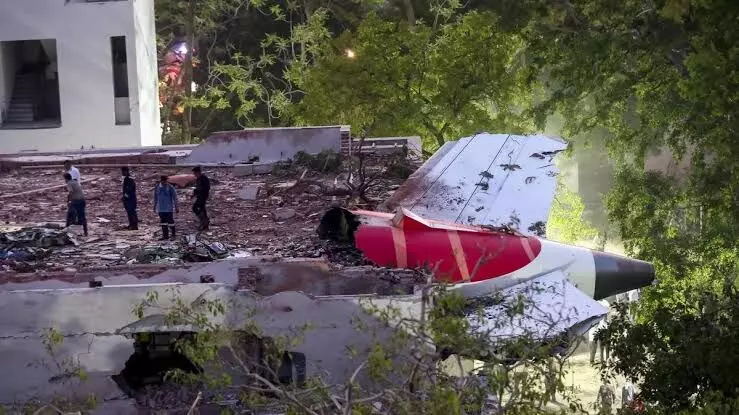Ahmedabad crash: What could have gone wrong?
The A1171 Boeing 787 Dreamliner flying to London Gatwick from Ahmedabad
By Coreena Suares
Ahmedabad crash: What could have gone wrong?
Hyderabad: The Air India Ahmedabad to London flight crash near the airport, moments after take-off on June 12 afternoon, is one of the deadliest plane crashes in Indian aviation history, with around 245 dead. Investigators today announced the recovery of the Flight data recorder, one of the aircraft’s “Black boxes”.
The aircraft, which crash-landed in a medical hostel, has shaken the nation. Everyone is trying to understand what caused the crash and how it could have been prevented.
The A1171 Boeing 787 Dreamliner flying to London Gatwick from Ahmedabad was 11 years old. Seconds after it took off from Ahmedabad Airport, it plunged into a nearby hostel. The flight took off at 13:38 and climbed to a maximum recorded barometric altitude of 625 feet before losing altitude. The last received data from AI171 by Flightradar24 occurred at 5 seconds later.
The flight was carrying 235 passengers and a 10-member crew. The pilot, Sumeet Sabarwal, who has an experience of 8,200 flying hours, issued a Mayday call to the ATC. However, the ATC never received any response from the plane after that.
A combination of training, maintenance or technology issues
While the cause of death is still unclear, NewsMeter spoke to a few experts and here is what they shared.
One of the experts, requesting anonymity, said, “In aviation, the cause of an accident is rarely ever due to a single issue. Instead, it usually results from a combination of factors. One way to understand this is through the ‘Swiss cheese model’ of safety. Imagine several slices of Swiss cheese stacked together, each slice represents a layer of safety like training, maintenance or technology. The holes in each slice are small gaps or weaknesses. When these holes line up, the protective layers fail, and a serious incident can occur.”
Keeping that in mind, here are some possible contributing factors that may have led to the recent accident:
1. Aircraft maintenance
An aircraft is only as safe as the care it receives.
Reports indicated that this particular aircraft type has had a history of operating with multiple items under the Minimum Equipment List (MEL), which allows planes to fly under specific conditions even when some systems are inoperative. Frequent MEL operations may point to deeper maintenance concerns.
2. Pilot procedures
There may have been a procedural lapse during take-off.
For instance, not using the right flap setting could have affected the aircraft’s lift. Additionally, if the landing gear wasn’t retracted in time, it could have created extra drag, preventing the aircraft from climbing properly.
3. Bird strike
Though rare, it’s possible that birds were sucked into both engines during take-off. This can cause engine failure and lead to a sudden loss of thrust, the forward force that propels an aircraft.
4. Technical malfunctions
Internal issues, such as a fuel supply fault or a hydraulic system failure, could also have contributed to the aircraft losing power or control.
5. Load and balance issues
If the weight on the aircraft was unevenly distributed or not loaded as per the required center of gravity, it could have disrupted stable flight.
6. Organisational changes
Air India is currently undergoing a major transformation. In such times of change, it’s crucial to have strong ‘management of change’ processes in place. If this transition wasn’t thoroughly managed across all departments, it could have indirectly affected safety practices.
This is the first ever crash of a Boeing 787 Dreamliner. The flight data states the flight recorded 41,000 hours of flying time and 8,000 take-offs and landings in the past 12 months.
According to Flight Radar - an online tool that monitors aviation movements across the globe
Altitude data reported via ADS-B is based on uncalibrated barometric pressure above mean sea level, reported at standard pressure. That means that the altitude sent from the aircraft is not the altitude above ground level. Taking into account local air pressure and elevation, Flightradar24 has calculated AI171’s altitude above ground level. The calculations use QNH (local pressure setting) of 1001 hPa and airport elevation of 189ft. Calculations do not account for local air temperature and ADS-B altitude values have a resolution of 25 feet, therefore some uncertainty still exists.